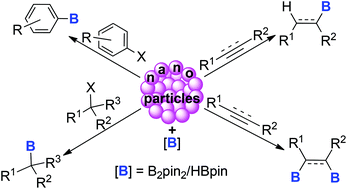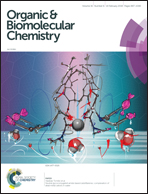A nano-catalytic approach for C–B bond formation reactions
Abstract
Herein, we present a chronological survey of the metal/metal oxide nanoparticle-catalysed borylation reactions. Transition metal-catalysed borylation is considered to be one of the most efficient methods for the synthesis of organoboron derivatives. Considering chemical and pharmaceutical processes, the major drawbacks of homogeneous catalysis are metal contamination in products and inability to recover catalysts for reuse, which limit its application industrially, in biomolecules, and materials science. The use of nanoparticles as heterogeneous catalysts is a current topic of research to overcome these limitations. This review gives an overview of the metal nanoparticle-catalysed borylation reactions and also discusses the reaction mechanisms.

- This article is part of the themed collection: Celebrating excellence in research: women of organic chemistry


 Please wait while we load your content...
Please wait while we load your content...